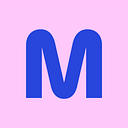2020 Design Trend Forecast
What design trends will we see in the new year?
 Profound designer’s block is best remedied by a strong dose of analogous inspiration from other creative industries like fashion, photography, print, architecture, and interior design.
Profound designer’s block is best remedied by a strong dose of analogous inspiration from other creative industries like fashion, photography, print, architecture, and interior design.
These kinds of industries demand original and endlessly imaginative output too, so I find it’s best to surround yourself with as much beautiful work as possible in order to sense the changing tides.
And while there’s no way to truly predict the design trends of 2020, if you come up for air every once in a while, you might find some inspiration worth pursuing.
Note: This post has tons of images and may take time to load. Click any image to view the source and learn more.
Khaki & beige
Over the past several years, we’ve witnessed a societal surge in environmental activism, and while industries across the market shift to be more renewable, natural, and sustainable, design must respond accordingly.
Expect to see khaki, beige, cream, and nude tones throughout design as businesses move to become (or at least be perceived as) more eco-friendly. Au naturel is au-so-beautiful.
Monochromatic
It takes tremendous expertise, artistry, and control to build an entire design around a single color. Shades, tints, tones, and textures are as strong a palette as a rainbow of hues and pigments but are harder to master.
Spend more time selecting the right foundational color and allow it to speak for itself. Dishes at the world’s finest restaurants feature simple ingredients prepared in exquisite fashion, so practice a little restraint and technique.
Space & volume
More is more, and things are just getting bigger.
In fashion, draping is all about appreciating and harnessing the characteristics of fabric to make it move and fall in beautiful ways. Volumetric designs explore a single, oversized element, just as monochromatic palettes push and manipulate a single color.
Asymmetry
Symmetry is easy; there is comfort and harmony in balance. It takes a certain level of confidence and bravery to design something intentionally unbalanced or crooked; the brain wants evenness and uniformity, and it’s hard to pull off without it looking wrong.
Sweeping uniformity in a symmetrical design can be boring, and the way it’s observed, erratic. Because everything is balanced, it’s hard to know where to look.
Conversely, when asymmetry is done well, you have complete control of the viewer’s eye so they’re looking exactly where you want them to look. Elements placed intentionally off-kilter demand attention. It’s a wonderful technique for ensuring important design features aren’t overlooked.
Reimagined classics
Classical design is quintessential. Definitive. Simple, yet elegant. Timeless.
That’s why they’re ideal for stealing and reimagining in your own way. Every great bar has its own twist on classic cocktails like the Manhattan or Old Fashioned, but each interpretation is unique and delightful and surprising in its own way.
Don’t avoid the classics just because they’ve been done before. If anything, do them again, but in your own way. There’s a reason classics are timeless, so add your own rendition to their history.
Textures
Texture doesn’t just exist in the physical world. There are digital methods and techniques for recreating surface, finish, and grain in order to make designs more tactile.
Playing with texture is about playing with the senses; it’s not just about how something looks, but how it feels, too. Otherwise flat designs can feel smooth, rough, coarse, or silky, which can help evoke different emotional responses in the viewer or user. Textures can be refined and subtle, or intentional and pronounced.
Stripes
Stripes are a timeless design motif not to be overlooked. It may seem like a simple pattern, but there are tons of attributes you can play with: color, weight, direction, quantity, taper, overlap, texture, fill, arrangement, adjacency, continuity, repetition, alignment.
As with asymmetry, stripes give you control over the viewer’s eye. They can be bold and striking, or soft and delicate.
Summary
The theme of 2020 is technique.
The world’s greatest designers use the same tools, colors, and materials as you and me, so creativity and originality lay in the subtleties.
We are not lacking for inspiration. But designers could exercise a little more craftsmanship, a little more imagination, and a little more ingenuity.
Happy 2020.

